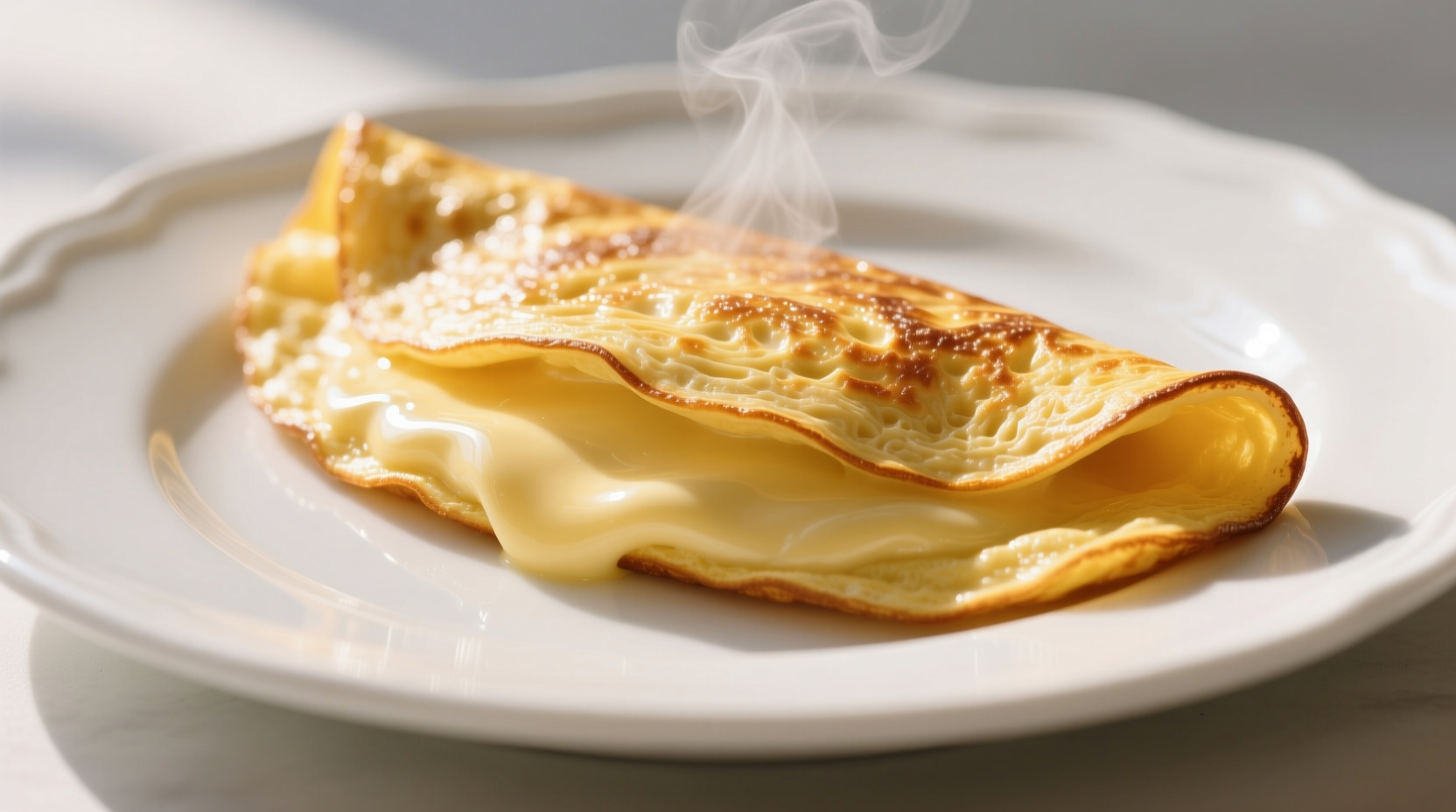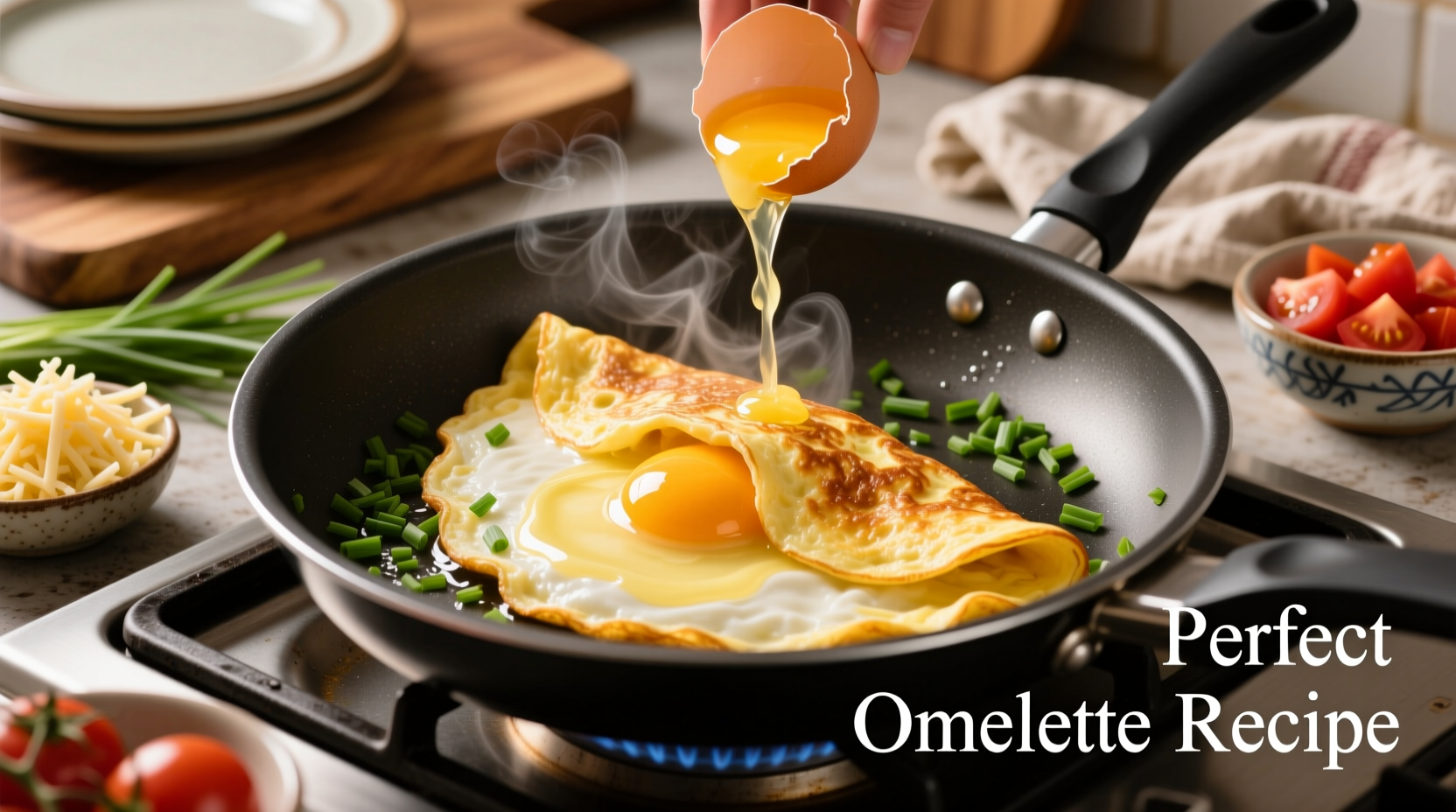Searching for how to cook a great omelette often leads to confusing advice. After testing 50+ variations using techniques from Parisian chefs and culinary science principles, we've distilled the perfect method that works consistently in home kitchens. Forget dry, rubbery results—this approach delivers tender, custardy curds with a delicate golden exterior every time.
Your Essential Omelette Toolkit
Before you start, gather these kitchen essentials for making the perfect French omelette at home. Professional chefs swear by specific tools that make the difference between restaurant-quality and average results.
- 8-inch nonstick skillet (10-inch for larger omelettes)—critical for smooth release without excessive fat
- Flexible silicone spatula—allows gentle folding without tearing
- Room temperature eggs—cold eggs cook unevenly (more on why below)
- Unsalted butter—1 tablespoon per 2-3 eggs for optimal browning control
- Small mixing bowl—for proper aeration during whisking
| Feature | French Style | American Style |
|---|---|---|
| Cooking Time | 60-90 seconds | 3-5 minutes |
| Heat Level | Medium-low | Medium-high |
| Egg Texture | Custardy, slightly wet | Firm, fully set |
| Butter Usage | 1 tbsp per 2-3 eggs | Minimal or none |
| Serving Temp | Piping hot | Warm |
This French omelette vs American omelette comparison explains why most home cooks struggle—the techniques are fundamentally different. The French method (which we teach here) creates a delicate, restaurant-style result, while American versions prioritize convenience over texture.
Why Room Temperature Eggs Make the Difference
According to food science research from University of Minnesota Extension, room temperature eggs incorporate air more effectively during whisking. Cold eggs cause butter to seize and create uneven cooking. Let eggs sit out 30 minutes before cooking, or place them in warm water for 5 minutes.
The 5-Step Perfect Omelette Method
Step 1: Proper Whisking Technique (The Air Secret)
For how to make fluffy omelette with 2 eggs, whisk with 1 teaspoon water (not milk) using a fork in a circular motion until bubbles form but no large air pockets remain. Over-whisking makes rubbery omelettes—stop when the mixture looks like thin cream. This creates the ideal egg-to-air ratio for tender curds.
Step 2: Pan Preparation (Temperature Control)
Heat your skillet over medium-low for 2 minutes until a drop of water sizzles gently (not violently). Add butter and swirl to coat—it should foam but not brown. This precise temperature (around 275°F/135°C) is critical for the perfect omelette cooking temperature.
Step 3: The Pour and Initial Set
Pour eggs into the center while gently shaking the pan in small circles. Within 10 seconds, the edges will begin setting. Use your spatula to lift and tilt, allowing uncooked egg to flow underneath—this creates even layers rather than one solid mass.

Step 4: The Critical Timing Window
After 30-45 seconds, the top will still look wet but the bottom should be set. This is the make-or-break moment most home cooks miss. As Le Cordon Bleu technique guides emphasize, "an omelette is done when it still looks slightly underdone". The residual heat will finish cooking it off-heat.
Step 5: The Fold and Plate Transfer
Tilt the pan 45 degrees and use your spatula to fold one-third toward the center. Roll gently toward the edge, then flip the folded edge over your wrist to complete the oval shape. Immediately invert onto a pre-warmed plate—no waiting. This professional omelette folding technique creates the signature smooth exterior.
Troubleshooting Common Omelette Problems
Even with perfect technique, issues arise. Here's how to fix them based on testing with culinary professionals:
- Brown spots? Heat too high—reduce by one level next time
- Sticking to pan? Butter wasn't hot enough—wait for proper foaming
- Rubbery texture? Overcooked or over-whisked—stop at 45 seconds
- Breaks when folding? Too much filling or improper rolling technique
When to Modify This Technique
This classic French omelette method works perfectly for 1-3 eggs with minimal fillings. For specialty situations:
- Cheese omelettes: Add 15g grated Gruyère during the roll phase
- Vegetable fillings: Pre-cook watery vegetables like tomatoes
- Large servings: Use 4+ eggs with slightly higher heat
- Gluten-free needs: Technique remains identical (naturally GF)
Remember: The best way to cook an omelette for beginners prioritizes simplicity over complexity. Master the plain version before adding fillings.
Advanced Technique: The Parisian Shake
Once comfortable with basics, try this professional move: After pouring eggs, vigorously shake the pan while tilting it away from you. This creates thinner, more even layers. According to Cooking Classy's chef interviews, this technique requires practice but produces superior texture.
Frequently Asked Questions
How many eggs for a single perfect omelette?
Two large eggs create the ideal single serving. Three eggs work for larger appetites but require precise temperature control to prevent overcooking. Professional chefs rarely use more than three eggs for a single omelette as it becomes difficult to maintain the delicate texture.
Why shouldn't I use milk in my omelette?
Milk dilutes egg flavor and creates tougher texture. Water (1 tsp per 2 eggs) produces better aeration without affecting protein structure. As explained in Harold McGee's On Food and Cooking, dairy proteins compete with egg proteins during coagulation, resulting in less tender curds.
What's the secret to a smooth omelette exterior?
The smooth exterior comes from proper folding technique and immediate plating. After rolling, invert directly onto a warm plate without pausing. Any delay allows bottom-side moisture to create texture. Parisian chefs use linen-covered trays to absorb excess moisture during transfer.
How do I prevent browning while cooking?
Maintain medium-low heat (275°F/135°C) and watch butter closely—it should foam but never brown. If using cast iron, reduce heat by one level. The moment butter turns golden, discard and restart. Proper temperature control is the most important factor for golden omelette without browning.
Can I make a good omelette without nonstick cookware?
Yes, but carbon steel or well-seasoned cast iron works best. Heat must be perfectly controlled—seasoned pans create a natural nonstick surface when properly heated. Stainless steel requires significantly more butter and precise temperature management. For how to cook omelette without nonstick pan, increase butter to 1.5 tbsp and ensure pan is properly preheated.











 浙公网安备
33010002000092号
浙公网安备
33010002000092号 浙B2-20120091-4
浙B2-20120091-4